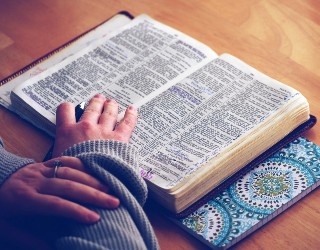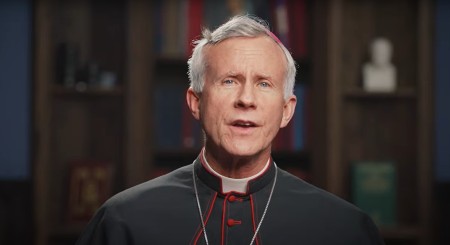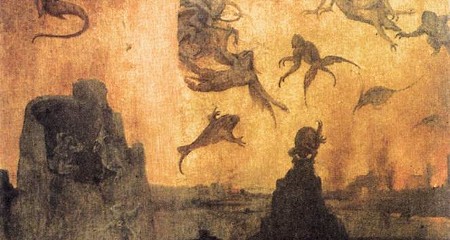Diversity arises in more churches
FREE Catholic Classes
McClatchy Newspapers (MCT) - The Sunday service at Durham, N.C.'s King's Park International Church features a blast of hymns, gospel and praise music performed live and loud by band members that are as multi-racial as the people in attendance.
Highlights
McClatchy Newspapers (www.mctdirect.com)
12/22/2008 (1 decade ago)
Published in Living Faith
The church, one of the region's most diverse, is a prime example of a trend.
A new study of U.S. religious congregations by a Duke University sociologist shows significant changes in the racial composition of churches within just nine years.
Mark Chaves' National Congregations Study finds that predominantly white churches are welcoming more Hispanics, Asians and blacks. The study, conducted last year among 1,506 congregations, raises challenges to the adage that 11 a.m. Sunday is the most segregated hour of the week.
As the nation gets ready to inaugurate its first black president, the study suggests a growing acceptance of black people in mostly white congregations. "This is movement in a positive direction," said Chaves.
In Chaves' study, the number of people in predominantly white congregations with some Hispanics grew to 56 percent from 49 percent in 1998. Likewise, the number of people in predominantly white congregations with some Asians grew to 44 percent from 38 percent in 1998.
While many of these changes are due to an influx of immigrants, the study found that black and white integration is growing, too.
The percentage of people attending predominantly white churches with some blacks grew to 61 percent from 53 percent nine years ago.
The results of the study, published in Sociology of Religion, were culled from 45-minute interviews in English and Spanish held among church leaders between May 2006 and March 2007. The study illustrates a wide variety of trends in U.S. religious congregations. It concludes that services are growing more informal, clergy are growing older on average and churches are increasingly adopting technological innovations such as Web sites, e-mail and blogs.
But the conclusions regarding integration may be the most startling. Chaves said the study suggests that larger churches are more likely to have diverse ethnic and racial memberships. Those larger churches would include megachurches, defined as Protestant congregations with a Sunday attendance of 2,000 people or more, and Roman Catholic churches, many of which have seen a surge of immigrants from Mexico and elsewhere in Latin America.
Mary Lou Illingworth, who grew up in a predominantly white Catholic church, now spends nearly every day of her retirement years helping her rural Franklin County congregation absorb an influx of Hispanic families. Like a growing number of Catholic churches in North Carolina, Our Lady of the Rosary in Louisburg, N.C., is evenly divided between whites and Hispanics.
At 73, Illingworth speaks almost no Spanish but is picking up a little every day.
"I was raised in a Polish family," she said. "Now I can sing in Spanish and read in Spanish."
Many new converts to Catholicism, such as Scott Bass of Raleigh, N.C., appreciate the church's growing integration.
"We find it more than refreshing," said Bass, a Catholic who attends services with his wife, Roberta Mothershead, at the Doggett Center on the N.C State University campus. "It helps us see beyond our own limited perspective."
The study did not find a greater integration of white people in predominantly black churches.
SOCIAL ISSUES SHIFT, TOO
Scholars who study the intersection of religion and politics said the growing diversity may mean that congregations may not be able to mobilize as easily on hot-button social issues.
"Congregations are easier to politicize the more homogeneous they are," said John Green, senior fellow in religion and American politics at the Pew Forum on Religion & Public Life and professor of political science at the University of Akron.
That doesn't mean congregations will drop all political activity, but it may be more varied, Green said. For example, issues such as abortion and same-sex marriage may have to share time with issues such immigration reform or foreign policy.
EFFORTS TO BE INCLUSIVE
Ron Lewis, pastor of King's Park International Church, shuttles weekly between Durham, N.C., and his other congregation in New York City called Morning Star New York. He said he has found that Northern urban Protestant churches are typically more diverse than Southern churches. Still, his Durham congregation which is 40 percent white, 40 percent black and 20 percent Hispanic and Asian, has flourished mostly because of deliberate efforts to be inclusive.
Lewis said church leaders who want to diversify their congregations must make sure the music and the message relates to several groups. That means challenging some people with a service that may not always feel familiar.
"It starts with a genuine understanding of who we are as spiritual people," said Lewis. "Our primary identity is God in Christ, not black or white."
___
BY THE NUMBERS
56: Percentage of people attending predominantly white churches with some Hispanics.
44: Percentage of people attending predominantly white churches with some Asians.
61: Percentage of people attending predominantly white churches with some blacks.
___
© 2008, The News & Observer (Raleigh, N.C.).
Join the Movement
When you sign up below, you don't just join an email list - you're joining an entire movement for Free world class Catholic education.
-

-
Mysteries of the Rosary
-
St. Faustina Kowalska
-
Litany of the Blessed Virgin Mary
-
Saint of the Day for Wednesday, Oct 4th, 2023
-
Popular Saints
-
St. Francis of Assisi
-
Bible
-
Female / Women Saints
-
7 Morning Prayers you need to get your day started with God
-
Litany of the Blessed Virgin Mary
5 Biblical Warnings We All Must Heed
-

WHAT WILL IT TAKE? | Bishop Strickland Calls Out Silent Bishops in Strong Public Letter
-

Giants of the Fallen: Unveiling the Mystery of the Nephilim from a Catholic Perspective
-
Ancient Wisdom, Modern Choices: How Ecclesiastes 10:2 Illuminates Today's Political Divide
-
How Do We Know Truth? A Catholic Perspective
Daily Catholic
 Daily Readings for Monday, November 18, 2024
Daily Readings for Monday, November 18, 2024 St. Rose Philippine Duchesne: Saint of the Day for Monday, November 18, 2024
St. Rose Philippine Duchesne: Saint of the Day for Monday, November 18, 2024 Bless Me, Heavenly Father.: Prayer of the Day for Monday, November 18, 2024
Bless Me, Heavenly Father.: Prayer of the Day for Monday, November 18, 2024- Daily Readings for Sunday, November 17, 2024
- St. Elizabeth of Hungary: Saint of the Day for Sunday, November 17, 2024
- Prayer to Saint Anthony of Padua, Performer of Miracles: Prayer of the Day for Sunday, November 17, 2024
![]()
Copyright 2024 Catholic Online. All materials contained on this site, whether written, audible or visual are the exclusive property of Catholic Online and are protected under U.S. and International copyright laws, © Copyright 2024 Catholic Online. Any unauthorized use, without prior written consent of Catholic Online is strictly forbidden and prohibited.
Catholic Online is a Project of Your Catholic Voice Foundation, a Not-for-Profit Corporation. Your Catholic Voice Foundation has been granted a recognition of tax exemption under Section 501(c)(3) of the Internal Revenue Code. Federal Tax Identification Number: 81-0596847. Your gift is tax-deductible as allowed by law.






 Daily Readings for Monday, November 18, 2024
Daily Readings for Monday, November 18, 2024 St. Rose Philippine Duchesne: Saint of the Day for Monday, November 18, 2024
St. Rose Philippine Duchesne: Saint of the Day for Monday, November 18, 2024 Bless Me, Heavenly Father.: Prayer of the Day for Monday, November 18, 2024
Bless Me, Heavenly Father.: Prayer of the Day for Monday, November 18, 2024


